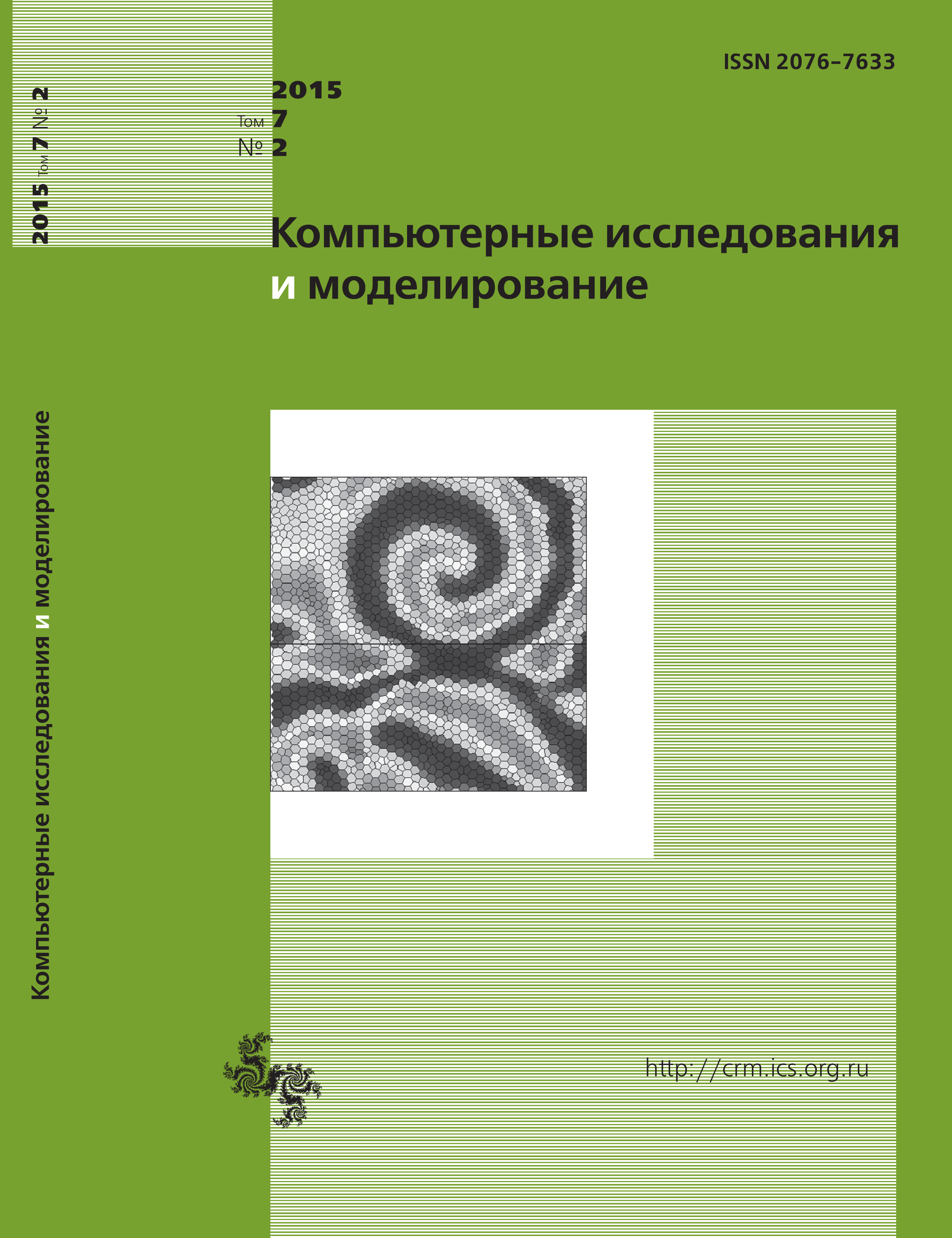All issues
- 2025 Vol. 17
- 2024 Vol. 16
- 2023 Vol. 15
- 2022 Vol. 14
- 2021 Vol. 13
- 2020 Vol. 12
- 2019 Vol. 11
- 2018 Vol. 10
- 2017 Vol. 9
- 2016 Vol. 8
- 2015 Vol. 7
- 2014 Vol. 6
- 2013 Vol. 5
- 2012 Vol. 4
- 2011 Vol. 3
- 2010 Vol. 2
- 2009 Vol. 1
Mathematical modeling of low invasive tumor growth with account of inactivation of vascular endothelial growth factor by antiangiogenic drug
A mathematical model of tumor growth in tissue taking into account angiogenesis and antiangiogenic therapy is developed. In the model the convective flows in tissue are considered as well as individual motility of tumor cells. It is considered that a cell starts to migrate if the nutrient concentration falls lower than the critical level and returns into proliferation in the region with high nutrient concentration. Malignant cells in the state of metabolic stress produce vascular endothelial growth factor (VEGF), stimulating tumor angiogenesis, which increases the nutrient supply. In this work an antiangiogenic drug which bounds irreversibly to VEGF, converting it to inactive form, is modeled. Numerical analysis of influence of antiangiogenic drug concentration and efficiency on tumor rate of growth and structure is performed. It is shown that antiangiogenic therapy can decrease the growth of low-invasive tumor, but is not able to stop it completely.
Copyright © 2015 Kolobov A.V., Kuznetsov M.B.
- , . The cosymmetric approach to the analysis of spatial structure of populations with amount of taxis. // Computer Research and Modeling. — 2016. — V. 8, no. 4. — P. 661. DOI: 10.20537/2076-7633-2016-8-4-661-671
Indexed in Scopus
Full-text version of the journal is also available on the web site of the scientific electronic library eLIBRARY.RU
The journal is included in the Russian Science Citation Index
The journal is included in the RSCI
International Interdisciplinary Conference "Mathematics. Computing. Education"







